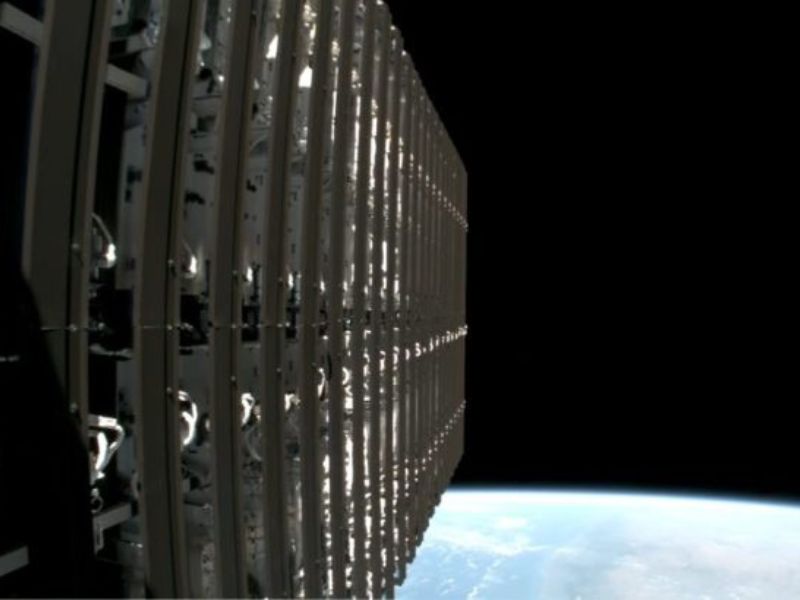T-Mobile’s Groundbreaking Test: First Wireless Emergency Alert Sent via SpaceX’s Starlink Satellites
An Alert from 217 Miles Above the Earth
On September 5th at precisely 5:13 PM PT, T-Mobile conducted a groundbreaking test. The carrier started a crisis caution for a speculative clearing take note, which wasn’t sent through conventional cell towers but using Starlink satellites circling 217 miles over the Soil. The alarm was picked up by one of the over 175 Starlink direct-to-smartphone satellites as of now in Moo Soil Circle, which work as cell towers in space. Once the flag was gotten, the fawning broadcasted the caution to an assigned geographic zone, where it was gotten by a T-Mobile smartphone on the ground.

The entire process took just seconds. This rapid delivery could be life-saving during real-world emergencies where every second counts.
How Does It Work?
Imagine being in an inaccessible area, totally exterior of cellular scope, and getting a basic departure caution on your phone. This can be presently conceivable and much appreciated by T-Mobile’s collaboration with SpaceX. Starlink satellites act as an expansion of the cellular organize, making it beyond any doubt that indeed when you’re in a cellular dead zone, you won’t be cut off from basic communications.
These satellites, which T-Mobile has named “cell towers in space,” are particularly planned to put through specifically with smartphones, bypassing the requirement for the ground-based framework. The longer-term guarantee is indeed more prominent: Starlink’s satellites are anticipated to provide voice, content, and data administrations, guaranteeing network in zones that were previously unreachable.
The Bigger Picture: Safety for All, Not Just T-Mobile Users
One of the foremost energizing perspectives of this technology is that it’ll benefit everyone, not fair T-Mobile clients. Concurring to the company, these crisis cautions will be broadcast to any phone within the influenced region, notwithstanding of the carrier. This implies whether you’re utilizing Verizon, AT&T, or any other supplier, you’ll still get life-saving alarms.
T-Mobile and SpaceX have highlighted this as an all-inclusive advantage to influence controllers, guaranteeing the innovation gets the green light from the FCC. In a world where normal fiascos can strike at any time, having this kind of broad-reaching communication seems to spare incalculable lives.
Beyond Emergency Alerts: What’s Next for T-Mobile and Starlink
This successful test is fair from the start. T-Mobile and SpaceX have been working closely to create satellite-to-smartphone innovation that will permit clients to send writings, make voice calls, and utilize information through adherent. Whereas texting using a disciple is set to dispatch this year, voice and information capabilities will roll out within a long time. In reality, early tests show the satellites can bolster smartphone video calls, web browsing, and download speeds of up to 17 Mbps.
T-Mobile is planning to beta test these lackey administrations sometime recently a full commercial dispatch, likely beginning this drop. And whereas competitors like AT&T and Verizon have raised concerns approximately potential impedances, T-Mobile is pushing forward, persuaded that this technology will shape the long haul of versatile communication.
No More Dead Zones: The Future of Connectivity

With T-Mobile and SpaceX working together, the days of being out of extend may before long be over. Whether you’re climbing in an inaccessible region, driving through a provincial interstate, or caught in a crisis, T-Mobile’s Starlink-powered toady innovation guarantees you’ll remain associated when it matters most. This may well be particularly basic amid typhoons, tornadoes, rapidly spreading fires, and other catastrophes that often thump out conventional cellular networks.
Conclusion: A New Era of Mobile Safety
T-Mobile’s test of the primary satellite-delivered crisis alarm could be a colossal step toward a future where no one is out of reach of life-saving communication. This innovation stands to advantage everybody, notwithstanding their remote supplier, and may fundamentally change how crisis alarms are sent and gotten within the Joined together States.
As T-Mobile proceeds to thrust the boundaries of portable innovation, one thing is obvious: the sky is not the constraint. Remain tuned as T-Mobile and SpaceX proceed to reshape the long haul of the remote networks.
Must Read:
- Reasons Behind Annapurna Interactive’s Gaming Team Resignation
- Salmonella Outbreak Linked to Recalled Eggs: 65 Sickened Across Nine States
FAQs:
1. What was the purpose of T-Mobile’s recent test with SpaceX’s Starlink satellites?
T-Mobile’s test pointed to sending the primary remote crisis alarm using Starlink satellites to illustrate the technology’s capacity to convey basic messages indeed in inaccessible regions.
2. When did T-Mobile send the test emergency alert?
The test emergency alert was sent on September 5th at 5:13 PM PT.
3. Will this satellite technology work for all phone users?
Yes, the emergency alert sent using Starlink satellites will be gotten by phones from any carrier, not fair to T-Mobile clients.

